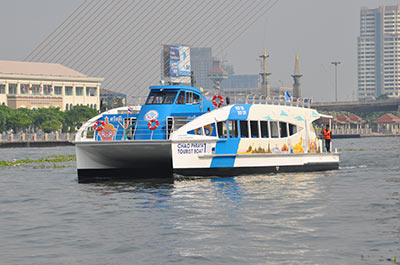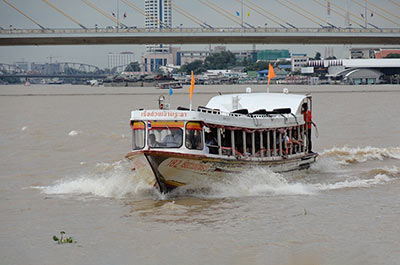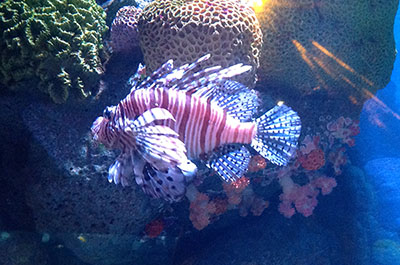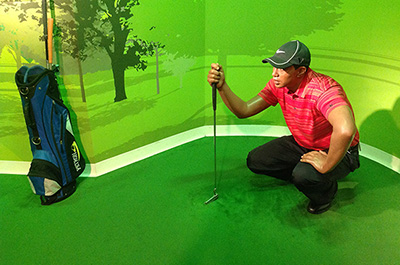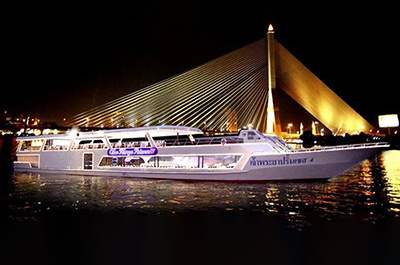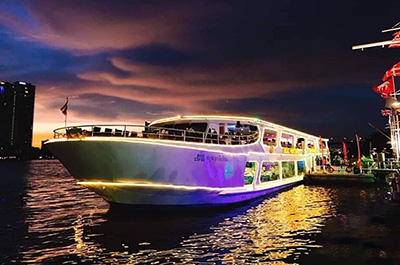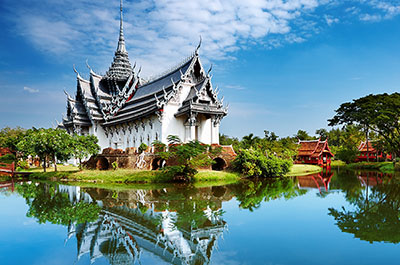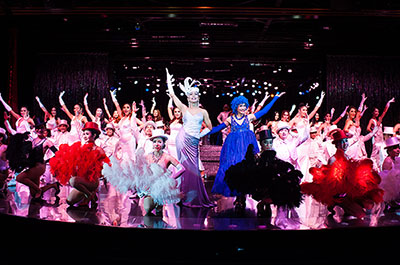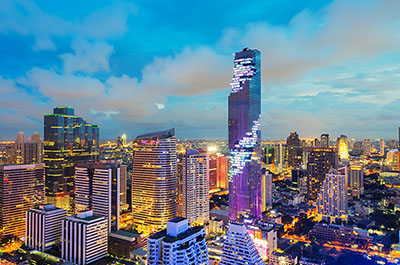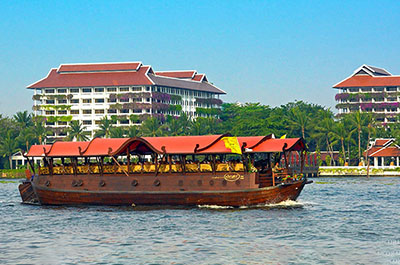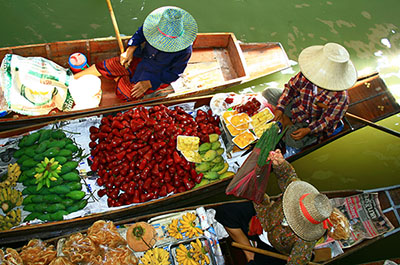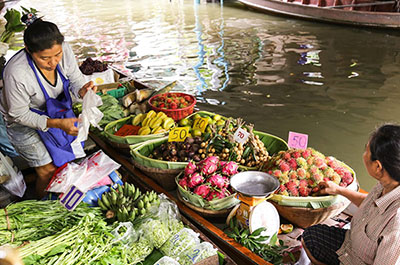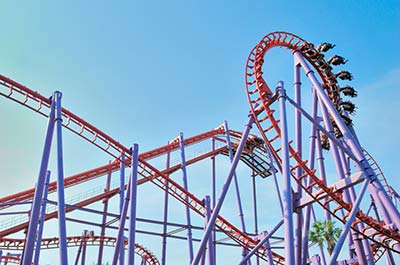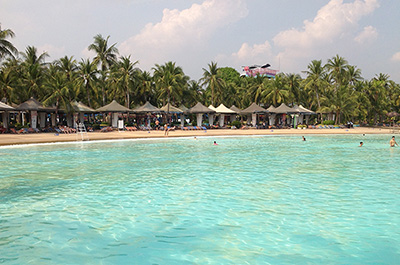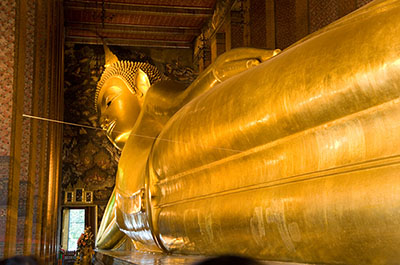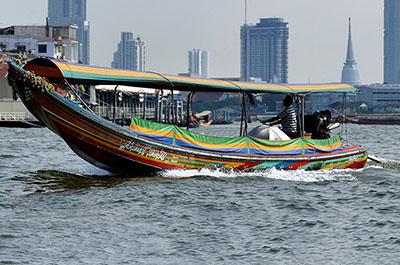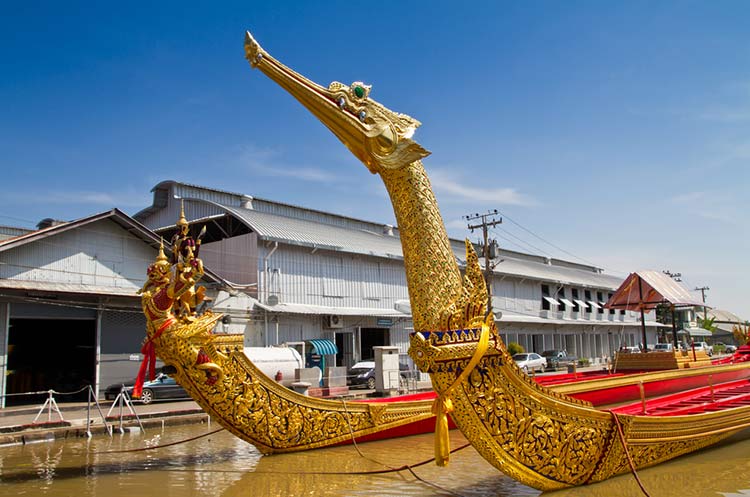
Royal Barges Museum
Historical barges used in Royal Barge Processions
The National Museum of Royal Barges on the Chao Phraya river stores a collection of ornately decorated historical barges. The museum houses eight barges including four Royal barges, historical artifacts like flags and old uniforms worn by the oarsmen, models of the boats as well as information about the history of the barges. Signs in English provide the visitor with information about the objects.
The colorful, ornately decorated boats are stored in boat houses, kept out of the water to prevent deterioration.
Royal Barge Processions
Manned by dozens of rowers, steersmen, chanters and signalmen, the long and slender boats adorned with hand crafted ornamentations have been used in Royal Barge Processions that were held regularly in previous centuries. Since the Ayutthaya era Kings traveled to religious ceremonies and other important events.
In recent days Royal Barge Processions have become a rare event. During the reign of King Bhumibol Adulyadej processions have been held for the Royal Kathin ceremony, a ceremony when the King gives new robes to the monks at the end of the Buddhist rains retreat at the Wat Arun temple, and for a few special occasions.
Royal Barge Procession 2019
In 2019 a Royal Barge Procession took place as an extension of the coronation ceremonies of King Vajiralongkorn.
The procession took place on December 12, 2019.
Royal Barges in Thai history
Royal barge processions have been held since at least halfway the 14th century for various Royal ceremonies, religious events, ceremonies to welcome foreign ambassadors, coronations and the Royal Kathin ceremony.
Ayutthaya era
When King Louis XIV of France send a new ambassador to Siam, the French were welcomed by representatives of King Narai of Ayutthaya. One of the Jesuit priests in the party described the event during which an impressive procession of more than 150 barges sailed down the Chao Phraya river.
Procession of 324 barges
A procession of 324 barges was held when King Narai traveled to Saraburi to pay homage to the Buddha footprint at the Wat Phra Phutthabat. During times of war, the barges were used as battleships.
Recent era
In recent times Royal Barges Processions were held for the Royal Kathin ceremony, as well as a few special occasions including the 200th anniversary of the establishment of Bangkok as the new capital of Siam, the celebration of the 60th anniversary of the King’s accession to the throne and de celebration of the birth of the Buddha 2,500 years earlier.
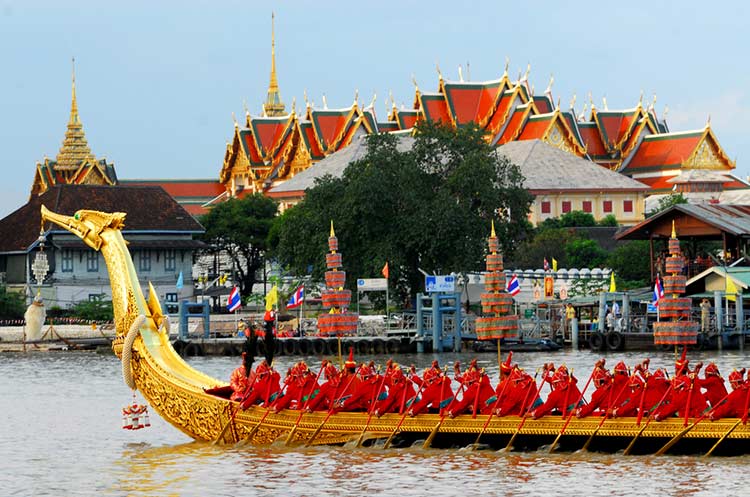
The Subanahongsa barge
The principal barges
The four principal barges are named Subanahongsa, Anantanagaraj, Anekajatbhujongsa and Narai Song Suban.
The Subanahongsa barge
The Subanahongsa or “Golden Hamsa” is named after the mythological Hamsa swan. Originally build in 1782 by King Rama I as the Royal Barge measuring 36 meters long, the boat was replaced by another Subanahongsa constructed by King Rama IV in 1911. The barge which is still in use today measures 46 meters long and is manned by 64 crew. At the front of the teak wood barge is a skillfully crafted Hamsa figurehead. The King and Queen travel aboard the Subanahongsa in a golden, roofed pavilion.
The Anantanagaraj barge
The Anantanagaraj or “Multiple headed Naga” is named after the mythological multi headed Naga serpent. The barge build in 1914 during the reign of King Rama VI measures nearly 45 meters in length and is manned by 68 crew. At the front is a figurehead in the shape of a multi headed Naga serpent.
The Anekajatbhujongsa barge
The Anekajatbhujongsa is the oldest of the principal barges. It was build towards the end of the 19th century during the reign of King Chulalongkorn (Rama V). The nearly 46 meter long barge is manned by 75 crew. There is no figurehead at the front. The barge is covered with intricately carved Nagas over its entire length.
The Narai Song Suban barge
The Narai Song Suban is the most recent of the principal barges. It was constructed by the current King, Bhumibol Adulyadej (Rama IX). The 44 meter long boat is manned by 50 oarsmen.
Escort barges
During Royal Processions the principal barges are accompanied by dozens of escort barges, Ekachai barges and Krut barges carrying drummers and attendants.
Location
The museum is located on Arun Amarin road on the North bank of the Bangkok Noi canal in Bangkok Noi district, across the river from the Grand Palace.
How to get to the Royal Barges Museum
Longtail boat
The easiest way to get there is to charter a long tail boat, which can get right to the museum.
Express river boat
Alternatively, take a Chao Phraya Express river boat to either Phra Pinklao pier or Tha Rot Fai pier (Siriraj Hospital). From either pier, it is a nearly one kilometer walk to the museum. Although there are signs showing the way, finding your way through the narrow alleys can be a bit difficult.
Taxi
Another option is to take a metered taxi.
Get there by Chao Phraya Express river boat.
Opening hours
The museum opens daily from 9 am until 5 pm.
Ticket price
Walk in ticket prices at the museum are:
Bangkok’s best attractions
Attractions in Bangkok
Tours, Trips & Experiences Bangkok
- Bangkok and surroundings
- Private or group
- Full day or half day
